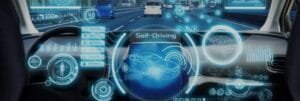How autonomous cars are re shaping our Uday understanding of driving?

For decades, driving has been seen as a personal skill, a milestone of independence, and a necessary part of daily life. Driving required a person behind the wheel to make decisions, navigate traffic, and respond to unpredictability, whether it was for commuting, running errands, or road tripping. But with the rise of autonomous cars, that traditional view is being rapidly challenged. These vehicles are transforming what it means to “drive,” shifting responsibility from humans to machines, and altering the way we think about safety, mobility, and our relationship with transportation.How autonomous cars are re shaping our Uday understanding of driving?
Autonomous cars, also known as self-driving cars, operate without direct human intervention by utilizing a combination of sensors, cameras, GPS, artificial intelligence (AI), and machine learning. These technologies allow the vehicle to perceive its environment, make decisions, and move safely on roads—all while the “driver” might be checking emails, reading a book, or even sleeping. As a result, the core concept of driving is being redefined from a hands-on activity to a passive experience.
The transfer of control and responsibility is one of the most significant alterations brought about by autonomous vehicles. In the past, all decisions while behind the wheel—such as speed, direction, braking, and responding to hazards—were made by the driver. With autonomous systems taking over these functions, questions arise about accountability.
These issues are forcing lawmakers and companies to rethink legal and ethical standards around driving.
Another major change is how driving skills and licenses might become less important over time.
For generations, getting a driver’s license symbolized freedom and adulthood. But with self-driving cars, the ability to manually drive may become unnecessary for many people. In the age of automation, children may never need to learn how to drive a car in the traditional sense. Driving could eventually become more like being a passenger in a smart transportation system.
Safety is a major motivator behind the development of autonomous cars. Human error accounts for over 90% of road accidents. Distracted driving, speeding, and poor decision-making are all common.
Self-driving cars are designed to eliminate these human flaws. They don’t get tired, distracted, or emotional. If perfected, autonomous technology could dramatically reduce traffic accidents and fatalities, reshaping public trust in machines and reducing the emotional toll of road-related tragedies.How autonomous cars are re shaping our Uday understanding of driving?
Beyond safety, autonomous cars also promise greater efficiency and convenience. They can be programmed to optimize routes, reduce traffic congestion, and communicate with other vehicles to avoid collisions. As a result, traffic could flow more smoothly, commute times might be shorter, and energy consumption could decrease.How autonomous cars are re shaping our Uday understanding of driving?
In addition, the planning of cities might be completely transformed by these vehicles. With fewer accidents and better traffic flow, cities may not need as many traffic signals, wide roads, or parking lots. Spaces currently used for parking could be repurposed for parks, businesses, or housing.

At the same time, ethical questions arise. If a crash is unavoidable, how should an autonomous car choose between harming different parties? Should it prioritize its passengers or pedestrians? These dilemmas challenge engineers and society to embed ethical decision-making into machines—an area that remains complex and controversial.
However, despite the exciting possibilities, barriers remain. Many people are still hesitant to trust a car that drives itself. Concerns about hacking, system failures, and machine errors are valid.How autonomous cars are re shaping our Uday understanding of driving?
Additionally, the cost of autonomous technology and the need for reliable How autonomous cars are re shaping our Uday understanding of driving? infrastructure—like smart traffic signals and well-mapped roads—mean that full adoption may take years or even decades. There’s also the economic impact, such as job losses for drivers in trucking, taxis, and delivery services.
In conclusion, autonomous cars are reshaping our understanding of driving in profound ways. They challenge the need for human control, promise increased safety and convenience, and push society to rethink how we design cities and manage transportation.
One thing is certain: the future of driving is not about driving anymore; rather, it is about navigating a new era of intelligent mobility. There are still many questions to be answered.
